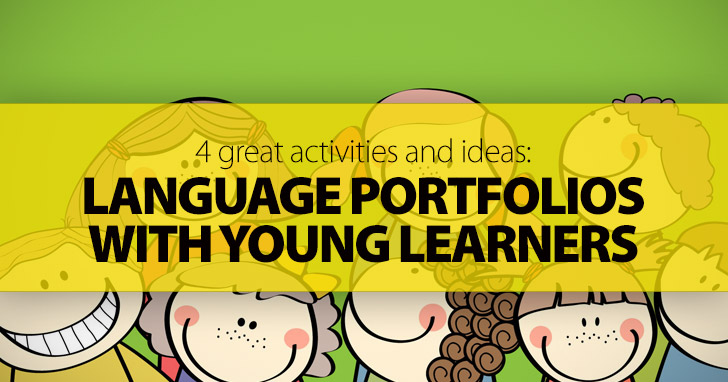For those who teach young learners, assessment is one of the things you give a lot of thought to.
We want our young ESL students to truly learn, especially from their mistakes and we want them to be aware of what they are learning. By using portfolio assessment, they can see their own progress over a period of time. For those who are unfamiliar with portfolio assessment, it is a collection of student work created and evaluated for specific objectives. Assessment is done by measuring the individual works as well as the portfolio as a whole. Take a look at some of the benefits of using portfolios.
- The learner is responsible for it, with teacher guidance and support
- Peers and parents are often involved.
- It measures student's ability over time
- The student is aware of the criteria, since it is done by the teacher and student together.
- The student is involved in his/her own assessment
- Student learns how to take responsibility
Language portfolios are a collection of course work which show learners’ level of English. It may include corrected class or homework, tests and exams or any other piece of work which illustrates where the learner is at. A learner may include voice or video recordings or any part of project work which they have done. Since language portfolios are a collection of work gathered overtime, there are many activities that you can use to include in the portfolio. Here are some great ideas for language portfolio activities you can use.

Apply These Great Portfolio Assessment Techniques with Your Young Learners
-
1
Book Review
These are great because since they involve reading, there are a number of different areas that can be assessed. Here learners read a book, it can be one you choose or they can choose from a selection available. Needless to say, these books should be age and level appropriate. After reading it, the students can share information about the plot, characters, and what they liked the most or least. It can be more detailed or less detailed, but there should be a record of the activity, so make sure they write their review or fill out a form you supply. They can even make an audio record of what they tell their classmates and include that recording in the portfolio.
-
2
Movie Review
Very similar to a book review, in this case you use a movie or part of a movie they have seen. Some teachers prefer to assign which movie to watch, while others let kids choose from a list of options they provide. Once again, make sure it is right for their level. This is why many choose a part of a movie to work with and not the whole thing. In any case, as with the book review, there should be a clear record of their work, written or oral. Here, since they are working with audiovisuals, a great choice is to video record them while they tell their classmates about the movie they have chosen. This and anything they have written should be included in the portfolio.
-
3
Diary Entries
At a certain age a lot of kids and most teens love keeping a personal diary. For a lot of them this continues until they become adults. Diaries are great because they are a magnificent way to express, understand and even come to terms with what is happening to them. That is why it is an excellent activity for a language portfolio. What you should do is ask each student to buy a notebook and tell them that this will be their diary for a specific amount of time. They should write about their day with a specific word count. They can then share some of these entries with their classmates. In this activity the record is the diary itself, so that is what should be included.
-
4
E-mails
Nowadays all kids learn to communicate through different means very early on. E-mail is one of these means and a necessary one since all of us use e-mail for everything and all the time. First they should go over some of the basics of e-mail writing, perhaps see some examples and then they can start practicing. They can send them to each other or to the teacher. In this case, they should also print them out to include them in the portfolio.
Language portfolios can be a lot of fun, just remember to choose great activities that will engage your students.
Make it fun, interesting and worth their effort and they'll thank you for it.
P.S. If you enjoyed this article, please help spread it by clicking one of those sharing buttons below. And if you are interested in more, you should follow our Facebook page where we share more about creative, non-boring ways to teach English.







